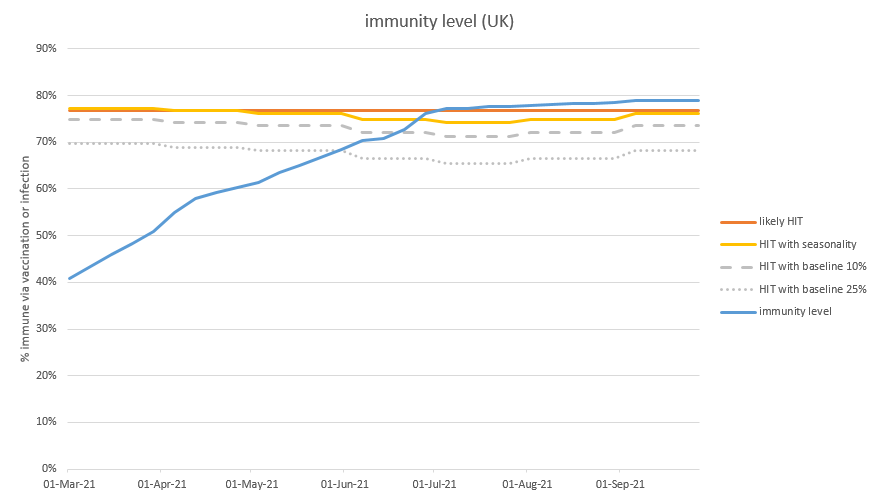
having played around with some numbers, I think it is plausible that a moderate immunity escape by B.1.617.2 (as per JBM thread) could account for a ~15-30% apparent gain in transmissibility for the new variant, given the UK's current distribution of immunity.
https://twitter.com/jburnmurdoch/status/1396015144233222144
some workings for those following at home: I'm assuming (rough numbers, allowing for lags) we have about 35% of total population with an effective 2nd dose, and another 25% with an effective 1st dose. and about 30% of the unvaxxed will have a prior infection.
I'm then applying transmission reduction factors of 80% for a first dose, 90% for 2 doses, and 85% for a prior infection. note these factors include the VE vs. infection, with an assumed 40-60% reduction in transmissibility of breakthrough infections (more after 2nd dose).
the net result of all that is we have about 65% effective transmission reduction (vs. B117) today, or about 35% effective susceptibles.
now with B.1.617.2, I'm assuming the transmission reduction factors fall to 65-70% (from 80%) for 1st dose, stay at 85-90% (from 90%) for 2nd dose, and fall slightly to 75-80% (from 85%) for prior infection. these falls may look small, but it's based on an assumption of a ...
... larger reduction in VE vs. infection, but with little change in the reduced transmissibility of breakthrough infections, which therefore acts to mute the effects of the vaccine escape on transmission.
now applying those reduced transmission reduction factors to the (unchanged) numbers of people with 1 dose / 2 dose / infection, implies we would have 55-60% total transmission reduction (down from 65%). this means the number of susceptibles is up from 35% to 40-45%.
and so the apparent gain in transmission would be a ratio of +15-30% (=+5/35 to +10/35). @DevanSinha @andrew_lilico (& others) welcome critique on this.
• • •
Missing some Tweet in this thread? You can try to
force a refresh





